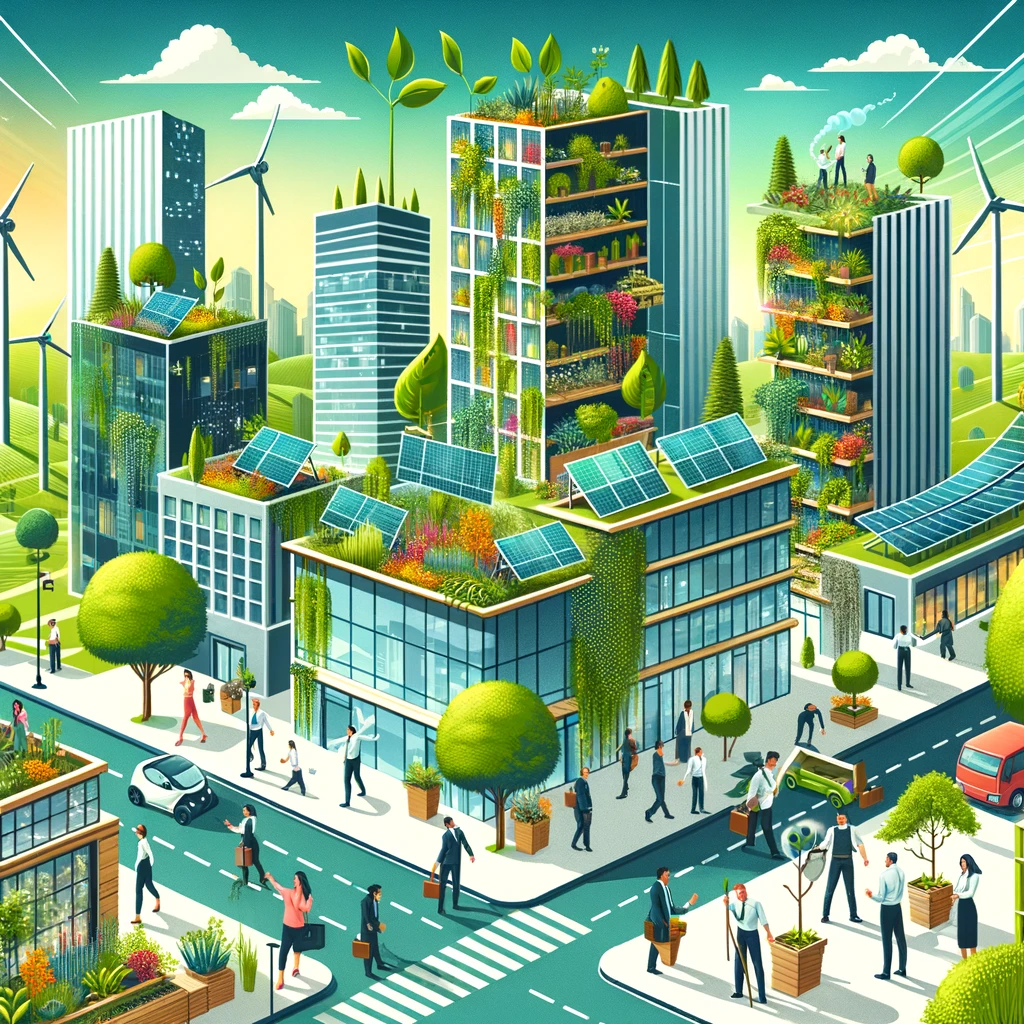Green Business Practices: How Companies are Leafing a Mark on the Environment
In the vast jungle of the corporate world, a new trend is growing faster than bamboo on steroids. Green business practices are sprouting up from the concrete, as companies big and small begin to think outside the recycle bin and take sustainability seriously. But why are businesses suddenly turning over a new leaf? Simple: being green is not only good for the planet, it’s also great for the wallet and the company image. Let’s dig into how today’s businesses are going green without going into the red.
1. The Rise of the Green Giants
Once upon a time, the term ‘green business’ might have conjured images of a quaint little shop selling handmade, biodegradable soap. Fast forward to today, and even the colossal corporate giants are cleaning up their acts and their emissions. From global logistics companies running electric delivery fleets to tech giants powering data centers with renewable energy, the business world is realizing that green is the new black (or is it the new gold?).
2. Waste Not, Want Not: The Circular Economy
One person’s trash is another person’s treasure, and in the corporate world, this couldn’t be truer. The circular economy is all about making the most out of resources—recycling, reusing, and reducing waste like a boss. Companies are turning old sneakers into playgrounds, coffee grounds into furniture, and plastic bottles into just about everything. This isn’t just recycling; it’s upcycling on an industrial scale.
- Example to Emulate: Imagine a company that takes your tired, old denim jeans and turns them into insulation for homes. Cool, right? This kind of innovation not only reduces waste but also opens up entirely new revenue streams for forward-thinking businesses.
3. Energy Efficiency: More Power to You
Reducing energy use is a bright idea—literally. Energy-efficient lighting, smart thermostats, and high-tech HVAC systems are making it easier than ever for companies to save on energy bills and reduce their carbon footprints. It’s like dieting for your electricity consumption: trim the fat, keep the muscle.
- Tech-Savvy Tip: Smart buildings use systems like IoT (Internet of Things) to manage everything from lighting to heating, ensuring that energy is used as efficiently as possible. When your building is smarter than you are, you know you’re doing something right.
4. Renewable Energy: Catching Some Rays (and Wind, and Water)
Solar panels, wind turbines, and even hydroelectric power are no longer just for tree-huggers. They’re becoming mainstream as businesses discover that renewable energy can provide long-term savings and price stability. Plus, nothing says “we care” quite like a company headquarters running on 100% clean energy.
- Shining Example: Many large corporations are now purchasing their own renewable energy directly from the source. This not only supports the renewable energy sector but also locks in energy costs, which is great for the bottom line.
5. The Green Team: Employee Engagement
Going green isn’t a solo sport. Companies are rallying their troops by involving employees in sustainability efforts. Whether it’s a competition to reduce waste, a company-wide volunteer day at a local nature reserve, or incentives for biking to work, getting everyone involved makes being green a part of the company culture.
- Cool Green Perk: Some companies offer ‘green benefits’ like subsidies for purchasing electric vehicles or installing solar panels at home. It’s like your boss saying, “Hey, thanks for not wrecking the planet!”
6. The Transparency Trend: Keeping It Real
In the age of information, consumers are savvier than ever about where products come from and how they’re made. They’re reading labels, asking questions, and demanding transparency. Companies are responding by being more open about their practices, often publishing sustainability reports or obtaining third-party certifications to verify their green credentials.
- Trust but Verify: Certifications like LEED for buildings or Fair Trade for products help reassure consumers that a company’s green claims are more than just talk.
7. Beyond the Buzzword: Sustainability as Strategy
For the cynics out there, ‘sustainability’ might sound like just another corporate buzzword. But smart companies know it’s a vital part of their strategy. By reducing risks associated with resource scarcity, complying with environmental regulations, and appealing to green-minded consumers, sustainability is becoming synonymous with innovation and longevity in business.
- Strategic Spin: Think of sustainability as a lens that can focus a company’s efforts on efficiency and future-proofing. It’s not just about being good; it’s about being around for the good times and the long run.
8. The Challenges: It’s Not Easy Being Green
Of course, transforming a business into a paragon of green virtue is not without its challenges. It requires investment, innovation, and a shift in corporate culture. There can be bumps along the road—technological glitches, pushback from less enlightened corners of the corporate structure, and the eternal battle to balance cost with benefit.
The Grass Is Greener on the Green Side
As we march into the future, one thing is clear: the greener pastures aren’t just an illusion. They’re a destination. For businesses willing to invest in sustainability, the path might be lined with challenges, but it leads to a place where being good for the planet is good for business, too. So here’s to the green giants, the eco-entrepreneurs, and everyone helping to turn the corporate world a shade greener. After all, there’s no business on a dead planet.







